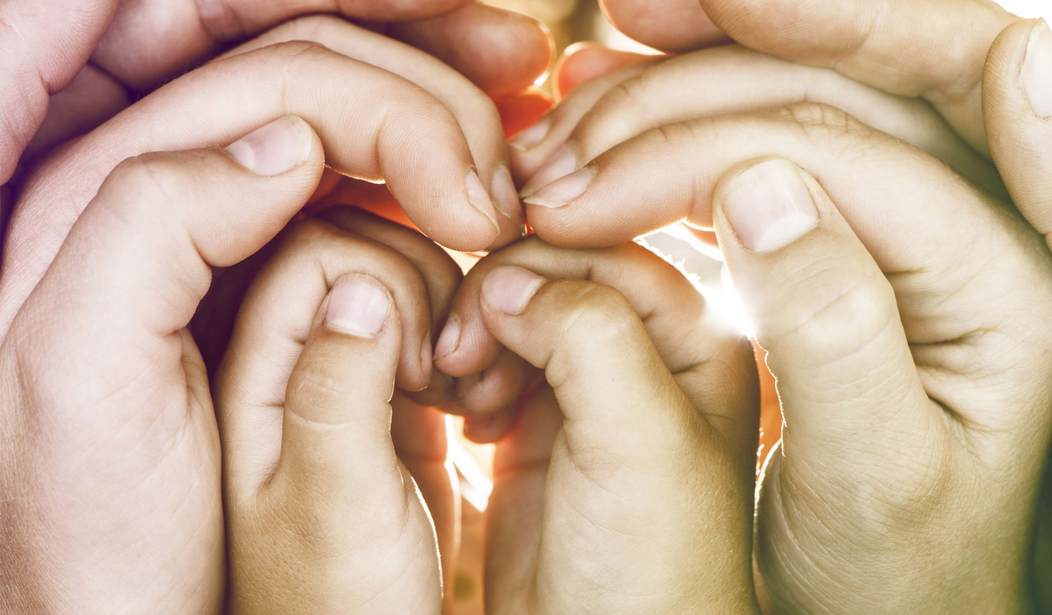One of the many, many things second-wave feminists failed to consider fifty years ago when they pushed women into the have-children-after-establishing-a-career plan was the sandwich era of life. This refers to the pickle where mothers of young children also have to care for aging parents.
Social work researcher Dorothy Miller coined the term “sandwich generation” in 1981, while referring to middle-aged women who were caught between caring for children still at home and for their own ailing parents. In the new liberated era these women now enjoyed, they had to balance this new role with the roles of mother, daughter, wife, plus employee. In the ’80s and ’90s, society wondered how women would cope. Hence, studies like Miller’s.
But this was the era of the Power Woman. Women could do everything men could do in high heels and backwards. Women would simply power though whatever difficulties life sent their way because they were woman. Hear them roar.
Few noticed the growing sandwich generation problem. Some even dismissed the struggle of having children at home and multiple elders to care for as an oddity. Up until then it probably was, and second-wave feminism did a dreadful job of looking forward and anticipating logical consequences.
A simple math illustration: prior to the second wave the average maternal age in the US was under 25. Women had a few children over a few years, so let us use 25 as a bulge in childbearing age. Do two generations of that plan, with 3 kids born when the first mother is 25 years old, and 3 kids born to her daughters when they are around 25 years old; women become grandmothers in their fifties. They have plenty of energy to help with the grandchildren, and they don’t typically need geriatric care until their late sixties, which is about the time their grandchildren would go to college and start their own independent lives.
This was the stressful time Miller named. Thanks, in part, to feminism, the middle-aged mom getting her children off to college would now face having to care for her children’s grandparents and possibly having to pay for college tuition and geriatric care — at the same time!
But the past 45 years have brought two twists to that hypothetical. One, in the post WWII era, medicine improved by leaps and bounds. Our life expectancy rose. Where illnesses once quickly claimed some of our aging population leaving only a few grandparents and great aunts to care for into their eighties and nineties, medical advances now meant that many of our elders would live longer. A welcome development indeed, but also a bit of a surprise to the elderly and their children. Many had not planned for longer-term care needs. Even the insurance market that sprang up around the turn of the century underestimated the cost of long-term care. Now few companies offer the insurance and it is no longer cheap.
Two, women started delaying childbearing until after they had established careers. By the 2000s when I was having my own children, later childbearing had become normal. I recall sitting with my neonatologist during my twin pregnancy and discussing how my third and fourth child would be my last pregnancy. He had just transferred from New York City to Houston and found it remarkable that I was on my third and final pregnancy at 36 when the bulk of his New York patients had often not even gotten started having children until their late 30s. Among college educated women, starting families after 35 is completely normal.
Two generations of 30-35-year-old-childbearing math means that parents become grandparents in their sixties and seventies. Not only does that fall when they are generally less able to help with their grandchildren, but also it hits the range when they start needing geriatric care. Their children are still caring for children of their own. We are starting to get to this second generation of delayed childbearing, and it is a doozy.
Now the sandwich era not only hits when the middle-aged carer is financially stressed with higher education costs and their own retirement, but also when the middle-aged carer is time-stressed. It is difficult to schedule family hospital vigils for ailing parents while also managing work and school pickups. I write from experience. I started drafting this post a few weeks ago after my husband called with the all clear from his mother’s surgery. I reported that I had just finished talking to my mom because my dad had fallen again.
As we discussed our parents’ care needs, the children arrived home and diverted me with all of their news, food needs, permission slips, and activities. When can we sit vigil at the hospital or take dinner to the elders in need of care? That has to work with all of the kids’ schedules as none of them drive or are old enough to be left on their own for long stretches.
Still, it isn’t as difficult as helping with ailing parents when children are still in preschool. I at least have the school day, or I do now that I am no longer homeschooling. Plus, I can rely upon my children to follow safety instructions around their grandparents. It is neither easy nor wise to take toddlers to hospitals or physical therapy. It is difficult to keep up with them in nursing homes. I have friends dealing with that.
The later we have children, the more likely we will have to simultaneously manage childcare and eldercare. Steinem & Co. neglected to tell their daughters about that.









Join the conversation as a VIP Member